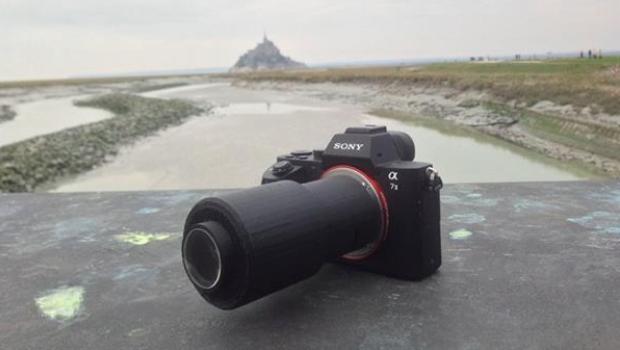Analog Photography is a pretty expensive endeavor. The gears that are required for this cost immensely, especially the camera lenses. They mostly range from hundreds to thousands of dollars. For the analog photography professionals, 3d printing has come up like a great sigh of relief. Mathieu Stern, a professional experimental photographer has proved that there are multiple ways that can help you in saving money.
Stern, a French exploratory picture taker, has devoted an entire Youtube channel to investigating and testing strange, obsolete, and frequently extremely cheap camera focal points. From toy focal points to mid-twentieth century focal points, to a $5 Russian focal point, he appears to have aced utilizing unpredictable focal points to catch some really shocking photographs.
His most recent video has especially topped our enthusiasm, as it includes transforming an old modest monocle focal point into a 135mm f1.8 Sony a7 camera focal point with the assistance of 3D printing. Stern, clearly a specialist at his specialty could ascertain how to turn the old monocle focal point (from 1890!) into a 135mm f1.8 focal point for his camera, and even made himself a cardboard model to test the computations. When he had made sense of the right separations and extends for the focal point, he enrolled the assistance of French 3D printing administration Fabulous to help him breathe life into his idea.
Arnault Coulet, CEO of Fabulous, was instantly up to the test and his group set to work planning the 3D printable focal point parts. As indicated by a blog entry by Fabulous, “The question postured by Mathieu is indistinguishable to that postured every day by our clients: how to utilize the upper hands of 3D printing to outline and make another imaginative item, modest, or more all performing.”
After some testing, Stern, and the Fabulous group was prepared to 3D print the parts for the camera, which comprised of two chambers—one to screw onto the camera, and one to move advances and in reverse for centering the picture. As indicated by Fabulous, they additionally coordinated an opening where Stern could embed 3D printed stomach plates for included visual impacts. Once the outline procedure was finished, the parts were 3D imprinted on a FDM 3D printer utilizing a dark PLA fiber.
